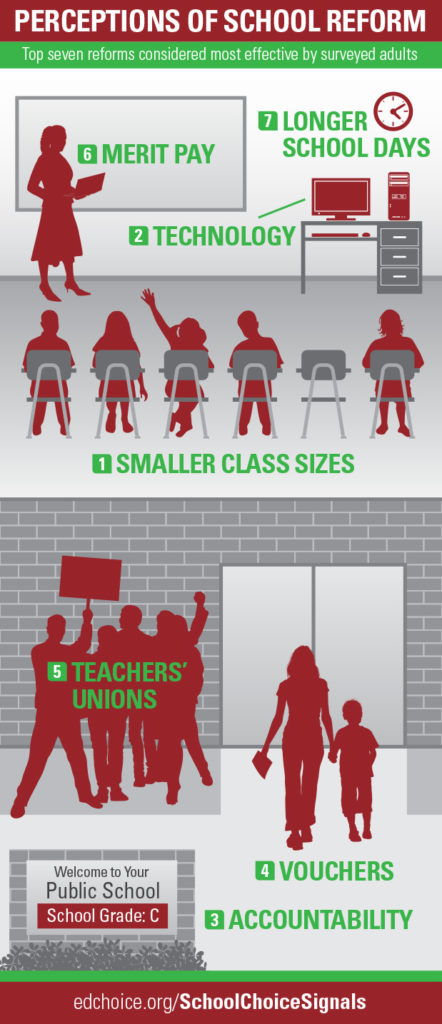America’s Favorite Education Reforms: Do They Treat a Symptom or the Cause?
A new Friedman Foundation report released today found what education reforms were most popular, in terms of their perceived effectiveness, among surveyed adults. The graphic below shows where Americans ranked them in importance, with one perceived as the most efficacious, and seven viewed as the least efficacious.

Smaller Class Sizes
- Force schools to pay for expansions to build more classrooms and hire more teachers. Reducing class sizes this way could take years before parents and children see the effects. Plus, how many students per classroom is too many? Too few? That arbitrary decision will have to be made by politicians and administrators.
- Give parents school choice options, such as vouchers or education savings accounts, that empower them to find schools with classroom sizes they want. In time, trends in what parents want will emerge and all schools will tailor their class sizes based on families’ needs.
Technology
- Charge more taxes to afford buying schools more technology. The problem? Who decides which technology is best and how much schools need? What happens if they guessed wrong and all those taxpayer dollars were spent on technology that is obsolete in two years? Are new tablets for every student necessary if only a small percentage of them have an interest or natural gift with technology, programming, and computer science? This strategy awakens more questions than it does solutions.
- Give all parents school choice options, so they can choose schools that fit their desired levels of technology-usage in their children’s education. The technological needs of a child who wants to nurture a gift for writing, debate, and communications, for instance, is less than a kid who has a natural gift for computing or, say, graphic design.
Accountability
- Force all schools to adopt the same curriculum and test all kids the same way to make all schools easily comparable. If teachers and schools cannot drive a minimum proficiency score, which lawmakers determine, then they get a poor rating. Enough poor ratings and teachers could be fired or schools shut down.
- Give all parents school choice. If a school is not providing the services or driving the outcomes parents expect, they have the financial power to leave. When parents move to a new school, their child’s money follows them. When schools lose money if they don’t meet parent standards, they have incentive to innovate and improve in such a way that will meet parent standards.
Ultimately, each of these desired outcomes in schools boils down to one question: What’s the best way to pay for it? Do we spend more money quickly in reaction to treat a symptom, or do we creatively invest money we already spend now to treat the cause?
To read the full report that analyzes multiple surveys to gauge Americans’ views on education reform, visit edchoice.org/SchoolChoiceSignals.




